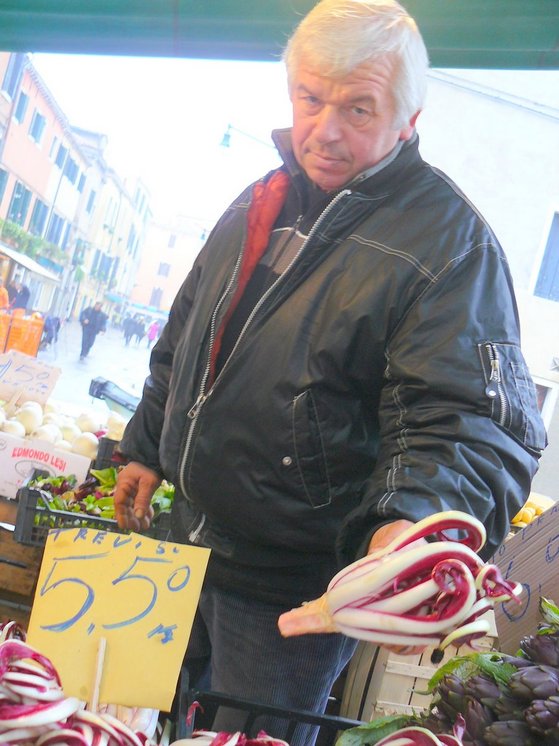
Vendor at a floating market in Venice offers late-harvest radicchio di Treviso
First of all, it's not a "radish," it's red-leaf Italian chicory. The root, sure, looks similar to a radish, ravanelle in Italian, but it's one of those "false friends." You eat the leaves, not the root, and delicious leaves they are. Sautéed with a bit of pancetta and garlic, it has a mouthfeel like celery and the flavor of a mushroom.
The best comes from Treviso, north of Venice, in the region called Friuli-Venezia Giulia, where it has gained protected IGP status, complete with its own official growers association (Consorzio Tutela Radicchio Rosso di Treviso) to designate the townships from which it can originate, specify its growing conditions and yields, and defend its good name. Works out to 7 tons per hectare, at about 13 ounces per plant, or 7,500 head per acre.
But it's a labor-intensive bugger, this late-harvest winter crop. After the plants are picked, their outer leaves are to be stripped. Then their roots are trimmed and they're packed into wire cages, immersed in warm water and placed in a dark barn until the leaves, deprived of sunlight and chlorophyl, turn white. The process, invented by a Belgian agronomist, is called imbianchiamento, literally "whitening." (White asparagus is similarly kept pale by mounding dirt over the plant as it grows.) Each step is described in a protocol or disciplinare; you can read it (in Italian) here. Pictures and more background here.
But the tardivo from Treviso isn't the only prized winter version of radicchio. There's also the famous "Rose of Gorizia," from the Alpine foothills of Gorizia, on the border with Slovenia. It doesn't have IGP status, but it's treasured by connoisseurs such as Michela Fabbro, chef and owner (with her husband, Piero) of a charming trattoria called Rosenbar that specializes in traditional local fare. On a recent mid-December visit, Rosenbar served it uncooked, in a salad of cannellini beans and pancetta.


Leave a comment